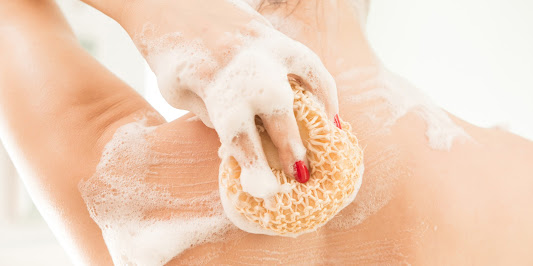What's in Your Sunscreen?
What's in Your Sunscreen?
How the ingredient oxybenzone may be affecting your health and the environment
Oxybenzone is a chemical that is found in sunscreen, hairspray, shampoo, and even plastics.1 It naturally occurs in a few flowering plants2, however it is more commonly created in the lab.3
Oxybenzone is found as a cream coloured powder that is nearly odourless, making it a useful ingredient in cosmetics, as it won’t drastically affect the colour or the smell.3 But why would you want to add oxybenzone to sunscreens and cosmetics? The answer lies in oxybenzone’s most useful property - it’s ability to protect our skin from ultraviolet (UV) radiation.1 UV radiation can lead to tanning, burning, and aging of the skin, and when an increase in exposure to UV rays occurs, DNA can become damaged, potentially leading to skin cancer.4 Oxybenzone is able to absorb the UV rays when applied on the skin, and releases them as lower energy rays.4
Despite all the protecting properties that oxybenzone provides for our bodies - it comes at a cost. There are multiple health risks associated with the chemical. First, it causes allergic reactions on the skin due to a process that occurs with UV rays.5 Second, it has been linked to a disruption in hormones; this can cause a birth defect called Hirschsprung’s disease, which is characterized by the inability for newborns to pass stool.6
Oxybenzone also has been proven to cause coral bleaching in aquatic environments.7 This has become an issue because sunscreen containing oxybenzone gets washed off the skin and into the water causing detrimental effects to various ecosystems.7
But don’t worry! There are alternatives!
Inorganic, mineral-based sunscreens can protect the skin from UV radiation by acting as a physical barrier without causing allergic reactions or affecting hormones.4 If you want to opt-out of mineral-based sunscreens, then you can pick an oxybenzone-free organic sunscreen, which contains chemicals that act similar to oxybenzone, minus the associated health risks.4
References
World Heritage Encyclopedia.Oxybenzone http://www.worldheritage.org/articles/eng/Oxybenzone (accessed Mar 7, 2021).
Centers of Disease Control and Prevention. Benzophenone-3 (BP-3) Factsheet https://www.cdc.gov/biomonitoring/Benzophenone-3_FactSheet.html (accessed Mar 6, 2021).
National Center for Biotechnology Information. Oxybenzone https://pubchem.ncbi.nlm.nih.gov/compound/Oxybenzone#section=InChI (accessed Mar 6, 2021).
Rai, R.; Shanmuga, S.; Srinivas, C. R. Update on Photoprotection. Indian J. Dermatol. 2012, 57 (5),335–342. https://doi.org/10.4103/0019-5154.100472.
Bryden, A. M.; Moseley, H.; Ibbotson, S. H.; Chowdhury, M. M. U.; Beck, M. H.; Bourke, J.; English, J.; Farr, P.; Foulds, I. S.; Gawkrodger, D. J.; George, S.; Orton, D. I.; Shaw, S.; McFadden, J.; Norris, P.; Podmore, P.; Powell, S.; Rhodes, L. E.; Sansom, J.; Wilkinson, M.; Van Weelden, H.; Ferguson, J. Photopatch Testing of 1155 Patients: Results of the U.K. Multicentre Photopatch Study Group. Br. J. Dermatol. 2006, 155 (4), 737–747. https://doi.org/10.1111/j.1365-2133.2006.07458.x.
DiNardo, J. C.; Downs, C. A. Can Oxybenzone Cause Hirschsprung’s Disease? Reproductive Toxicology. Elsevier Inc. June 1, 2019, pp 98–100. https://doi.org/10.1016/j.reprotox.2019.02.014.
DiNardo, J. C.; Downs, C. A. Dermatological and Environmental Toxicological Impact of the Sunscreen Ingredient Oxybenzone/Benzophenone-3. J. Cosmet. Dermatol. 2018, 17 (1), 15–19. https://doi.org/10.1111/jocd.12449.



Comments
Post a Comment